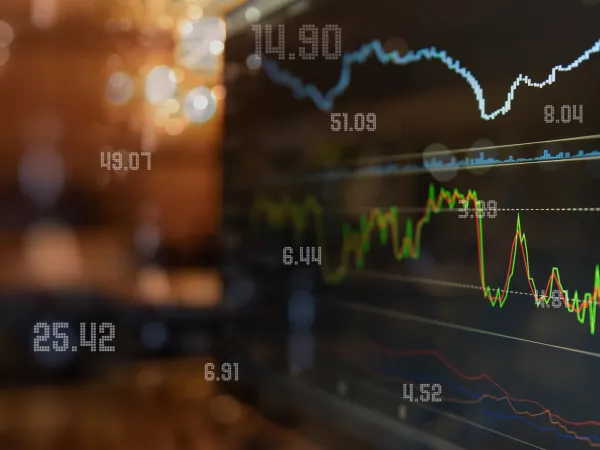
A digital globe overlaid with cryptocurrency symbols, including Bitcoin, Euro, and Yen, representing global finance and technology.
Crypto Exchanges & Competitive Markets: How Fee Structures Influence Market Power
With the changing public attitude towards crypto, exchanges have experienced a real boom in demand, and the market has suddenly increased. This has led to increased competition, and exchanges are now looking for ways to provide better, less costly services to their clients.
Fees become a true battleground in this regard. Trading and withdrawal fees can often make the difference between a profitable exchange and an unprofitable one, but they are also seen as customer service issues that may cause users to switch exchanges.
The Economics of Exchange Fees
Crypto exchanges charge a fee for their services. These include deposits, withdrawals, and trades. The fees are usually a fraction of the sum being traded or deposited. However, for those who trade a lot and frequently, these expenses can add up.
According to experts at Webopedia, the most common fee model is the "maker-taker" structure. "Makers" add liquidity to the market by placing limit orders, while "takers" remove liquidity by executing against those orders. In most cases, exchanges charge lower fees to makers and higher fees to takers.
Fees are used by exchanges to make a profit and run their daily operations. Some crypto exchanges in India charge no fees at all to attract new users, while others offer discounts for investors who meet a minimum transaction volume.
Market Power and Network Effects in Crypto Exchanges
Crypto exchanges gain market power by being liquid. This means that the more active users the exchange has, the more attractive it becomes to other users, as it shows they can execute trades quickly and that the exchange can be trusted.
Fee structure isn't the only factor in determining those qualities, but it does play a role in starting and sustaining the cycle of market power and liquidity. Low fees will attract new users, who will build the liquidity needed to attract institutional traders.
For instance, Binance has some of the lowest fees in the market, and it also rewards users who pay fees with its native coin, BNB. In the long run, this has made Binance one of the largest exchanges in the crypto industry.
Fee Models as Competitive Strategies
Different exchanges have different fee models in place, as they appeal to different types of traders.
A flat-fee system charges all users equally; it's the simplest way to go, but it's not adaptable to investors' needs. Tiered systems reward traders with lower fees based on the volume of their trades. It benefits those who trade the most.
Some exchanges have a token-based system. They use native tokens issued by the exchange to reduce the trade cost. This is done by Binance (BNB), OKX (OKB), and KuCoin (KCS). This type of system also encourages customer loyalty, which is becoming increasingly important in the competitive market.
There are two goals that the fee structure should accomplish. It should help acquire new users and retain and reward users who are already using the platform. Sometimes it's a matter of balance between those goals.
The Race to Zero
Over the past few years, crypto exchanges have begun what many call "a race to zero," aiming to charge no fees for their services. Binance, for instance, has managed to do so, but only for BTC spot pairs. Bitstamp offered a limited period during which it charged no trading fees.
Smaller exchanges can't cover the costs of trading that allow them to provide the service for free, and they are often squeezed out of an increasingly monopolized market. The platforms that do offer zero fees do so by applying hidden spreads or markup to conversion rates. Users, therefore, often feel cheated when trading costs are charged in this manner.
The key to achieving a zero-fee service is maintaining market liquidity and ensuring high trading volume at all times. Some exchanges can accomplish it, but it makes it difficult for new exchanges to emerge and worsens the user experience, as exchanges don't face competition.
Decentralized Exchanges (DEXs) and the Fee Paradox
Decentralized exchanges have a very different approach to fees than centralized exchanges. Instead of centralizing revenue, they distribute fees directly to liquidity providers. For instance, Uniswap has a 0.3 percent fee on trades and rewards those who provide its liquidity.
DEX also has another set of fees that centralized platforms don't have. These are called network gas fees. Such fees are paid to validators that support the network, and the amounts depend on network demand and the complexity of the service. On busy blockchains, these fees can exceed transaction fees.
Even though decentralized networks can be more expensive than centralized ones, they are growing in popularity due to their open, non-custodial nature.
Institutional Traders vs. Retail Users: Unequal Fee Impacts
A fee structure creates an unequal relationship between retail users and big institutional traders. Most exchanges charge fees based on volume, which favors traders who make many trades. Coinbase, for instance, has instituted a two-tier system, with a service called "Coinbase Pro" made for high-power users only. These users pay much less per trade than the ordinary ones.
This reflects a broader industry trend and a changing market. At first, cryptos were mostly used by high-tech enthusiasts, and it took a while for them to be accepted by the general public. Now that it did, institutional players, such as big investors, banks, and investment funds, got in. These players are now dominating the market, and it has adjusted to their needs.
Regulatory Implications and Transparency
Regulatory agencies, both national and international, are taking a closer look at crypto trading now that it's become so widely popular. This has had its upsides in making the market more transparent and safer, but it has also created an additional expense for crypto exchanges. These are then passed to the end user.
The most comprehensive regulatory action so far has come from the EU, with the MiCA Framework. It addresses fee structures among many other facets of crypto trading. The regulation requires transparency regarding trade costs.
In the US, the SEC and FINRA are insisting on similar measures. The goal of these is to help the user understand what they are paying for when they are charged fees for using a crypto exchange.
To Sum Up
Crypto exchanges are becoming increasingly competitive, and a few of the largest have emerged as leaders in volume and liquidity. One way exchanges compete with each other is by offering as low trading fees as possible. A few large exchanges pushed to charge no fees, but it led to higher other expenses.
Fees are usually structured so they favor users who trade the most. These are usually institutional traders rather than individual ones. In recent years, regulatory agencies have also introduced transparency to fee structures.


